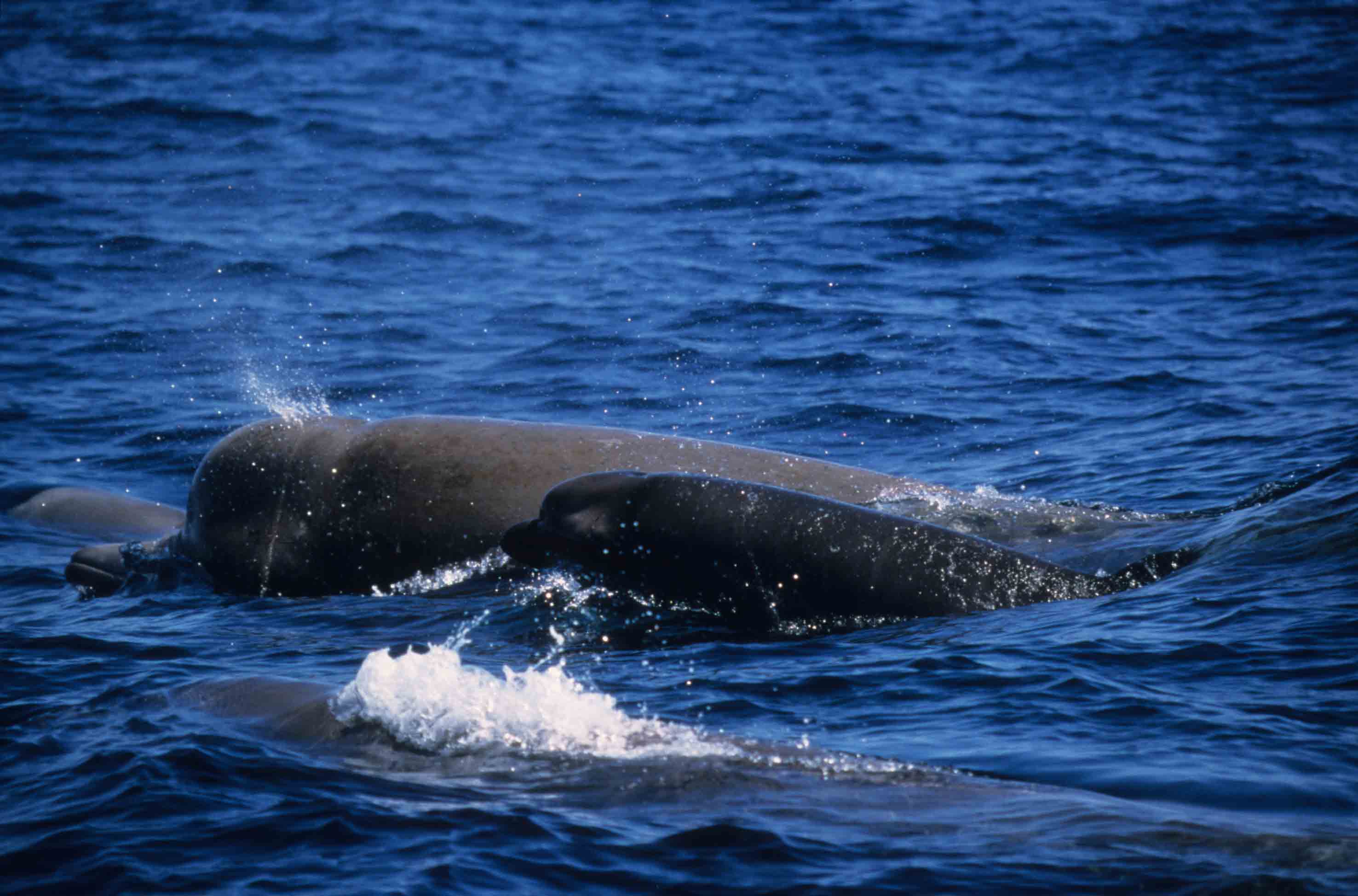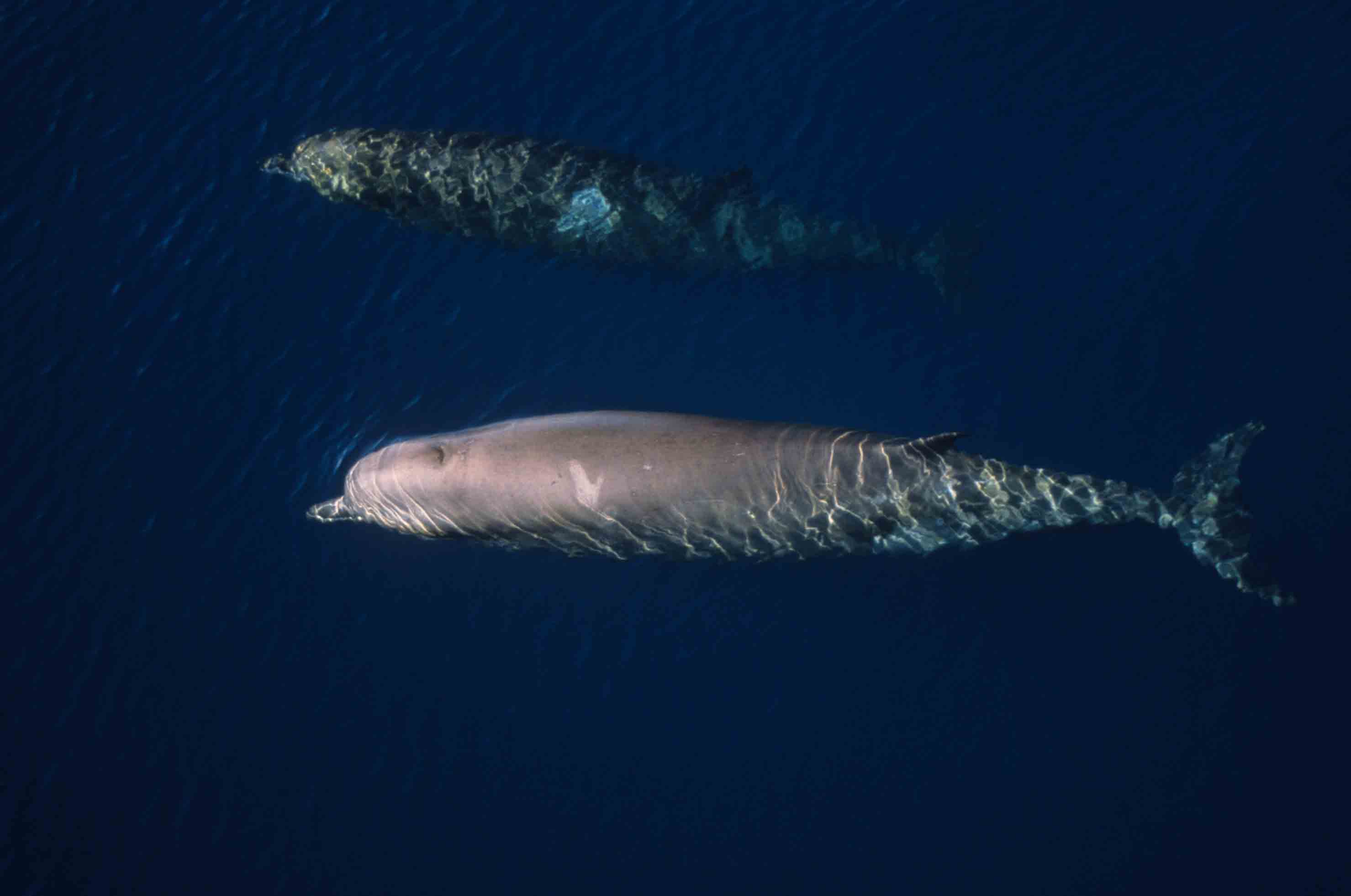After spending the weekend training interested members of the public about the varied species of whales, dolphins and porpoise to be found around the UK coast, staff at the marine charity Sea Watch Foundation were flabbergasted to see photographs of a dead, stranded Northern bottlenose whale that had washed up on a South Wales beach in their email inbox on Monday morning. The species can usually be found in deep ocean trenches and is usually only seen in British waters off the north-west coast of Scotland!
 Northern bottlenose whale carcass on Sker beach in Bridgend, showing distinctive bulbous forehead and long beak. Photo by Fay Lorraine Phillips/ Sea Watch Foundation.
Northern bottlenose whale carcass on Sker beach in Bridgend, showing distinctive bulbous forehead and long beak. Photo by Fay Lorraine Phillips/ Sea Watch Foundation.
Photographs were sent in by Neil Bright who, along with his girlfriend Fay Lorraine Phillips, discovered the animal whilst walking their dog along Sker beach near Porthcawl in Bridgend on Sunday. The images were immediately forwarded to the marine mammal strandings coordinator for Wales, Rod Penrose, who was able to confirm that he’d already attended the animal which was a 5.3m long northern bottlenose whale and had taken samples for DNA testing.
“Due to the state of decomposition together with extensive scavenger damage of the carcass I was unable to determine the cause of death” stated Rod. “This is the third record for Wales, the first was a 6.7m live stranding in Tenby, Pembrokeshire in August 1996 which was luckily persuaded to swim away, the second was a 6.21m female in slight decomposition which stranded at Prestatyn, Denbighshire in October 2009” added Rod of the UK Cetacean Strandings Investigation Programme.
The full length of the stranded northern bottlenose whale, showing the dorsal fin well towards the tail of the animal.
Photo by Fay Lorraine Phillips/ Sea Watch Foundation.
“Northern bottlenose whales have extremely bulbous heads with a protruding ‘bottle-shaped’ beak similar to that of a bottlenose dolphin” says Kathy James, Sightings Officer for Sea Watch Foundation. “These animals are much larger than their dolphin counterparts measuring up to 10m in length in males. It is thought that this individual is a juvenile as we’d expect an adult to be a minimum of 7.5m” adds Kathy.
Whilst it might be a sad sight to see a dead whale, dolphin or porpoise (collectively termed cetaceans), the scientists at Sea Watch suggest that it’s a really good and interesting indication of the wealth of wildlife that’s just off our shores. Only recently, the research charity reported on sightings of pilot whales off the same section of coast as well as in other locations around Wales. Three species of dolphin are also regularly being seen in these waters along with the diminutive harbour porpoise, which is the smallest of UK cetaceans.
 This image appears to show shark bite marks along the side of the whale. According to Rod Penrose, strandings coordinator for Wales, these would likely have occurred after the animal had died. Photo by Fay Lorraine Phillips/ Sea Watch Foundation.
This image appears to show shark bite marks along the side of the whale. According to Rod Penrose, strandings coordinator for Wales, these would likely have occurred after the animal had died. Photo by Fay Lorraine Phillips/ Sea Watch Foundation.
 A pod of northern bottlenose whales, showing the distinctive head shape and set-back dorsal fin.
Photo by R W Baird/ Sea Watch Foundation.
A pod of northern bottlenose whales, showing the distinctive head shape and set-back dorsal fin.
Photo by R W Baird/ Sea Watch Foundation.
 Northern bottlenose whales from above. Photo by S Hooker/ Sea Watch Foundation
Northern bottlenose whales from above. Photo by S Hooker/ Sea Watch Foundation
The most famous bottlenose whale is the ‘Thames Whale’ which found its way into the River Thames in London some ten years ago. This disorientated individual was found to be a female measuring 5.85m and died following a failed rescue attempt. Back in January of this year, the whale was commemorated with a march from the Natural History Museum (where its bones are displayed) to Battersea park beach where she stranded.
Find out more about whales and dolphins around the UK by joining one of our training courses in 2017. Email katrin.lohrengel@seawatchfoundation.org.uk with the title ‘Find out more about 2017 traning courses’ to be sent dates and information as soon as they are announced.
























